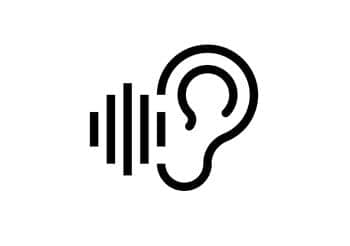Final Word | March 2014 Hearing Review
Disruptive Technology and Changes in Hearing Aid Distribution Can Also Bring Opportunity
It seemed simple enough. I have a system of security cameras out at our ranch property that I put up about a year ago to discourage local middle-schoolers from roaming around unsupervised and committing petty vandalism. Just the presence of the cameras has proven to be remarkably effective. One of the cameras recently failed, and I obtained a replacement under warranty. I also purchased a new HD camera allowing higher resolution viewing and recordings.
I thought setting up the replacement and the new camera would be simple enough. As an “Alpha Boomer” (the first wave of the Baby Boomers born in 1946), I have had a lifelong exposure to technology, and have observed first-hand the evolution of electronics from a crystal set radio my father helped me build (I listened to Groucho Marx’s You Bet Your Life on it) through tube-type amplifiers and on to learning how to solder some of the early integrated circuits into electronic countermeasure systems used in Vietnam-era military aircraft. Setting up a simple video camera system should be easy.
Well, not so much is what I learned. Vague instructions, paired with my general lack of understanding of static and dynamic IP addresses, led me to the point where I needed to call in a cable guy with far more understanding of the system than I would ever have the patience to learn. Even with his knowledge, the job turned out to take a couple of hours.
This humbling experience made me think about what will be facing us in the next few years. There is an emerging shortage of hearing care professionals. The number of audiologists and hearing aid dispensers is not expected to meet the needs of the rapid rise in the number of people like me who are approaching the age where we might think about acquiring hearing aids if needed.
Add that fact to the changes in the marketplace, including personal sound amplifier products (PSAPs) that are being produced with excellent fidelity, enabling them to be used off-label for self-treatment of hearing loss, and (in spite of manufacturers’ efforts to keep the best practices fitting model intact) gray market “Big Six” brand hearing aids available on the Internet with no-service pricing that will drive down the market price expectations. These developments, combined with insurance companies offering direct-to-consumer hearing aids, increase the disruption in the hearing aid delivery system.
What Does It Mean for Us?
Does this spell doom and gloom for dispensing professions? Not if my experience with the security cameras has a similar path with hearing aids.
I predict that there will be a number of do-it-yourselfers who will get great pleasure out of obtaining some kind of device over an Internet source and may end up with reasonable benefit. If over-the-counter eyeglasses fill a need for 40 year olds who haven’t fully accepted their plight and are avoiding a visit to the optometrist, there may be a similar path for those with mild hearing loss, in spite of the medical risks.
Many will quickly learn that they need help for getting a comfortable fit, obtaining a device that doesn’t look like a body aid or a Secret Service earwig, or selecting and electroacoustically fitting a device to specifically meet individual needs. I predict that we will learn that there will be a place in the marketplace for dabblers, and that there will still be a robust market for those who really need our full-service model.
Change Can Also Be Good
You may ask how these changes will be disruptive. We will need to change to accommodate market forces and expectations. The traditional bundled pricing for hearing aids may need to be modified so that we are accessible to provide the help that is needed. A consumer may look at a $700 pair of PSAPs and realize that, although the products meet some of their needs, they’d like some help in finding what will really work for them. A sevenfold jump in price may be too big a leap for them to commit to at that point in their search for help. We might offer a range of services that are affordable and compensate us fairly for services to more consumers rather than counting on fewer higher-dollar bundled product sales. The disruption will be in our own minds and service packages we offer, as well as in the perceptions of the consumers.
The Final Word? Hearing loss and difficulties communicating in noise will continue to present problems that will drive consumers to search for some kind of help. The development of new consumer products that help improve our ability to accommodate for hearing loss or signal-to-noise difficulties will contribute to the array of new products and techniques that allow us to provide valuable services to those searching for help. To be there and ready to provide the help, we will need to prepare ourselves by adapting our offerings to meet the needs of the new consumers and the new marketplace as they change.
I predict that we will learn that there will be a place in the marketplace for dabblers, and that there will still be a robust market for those who really need our full-service model.
Original citation for this article: Van Vliet, D. Update on dementia and hearing loss. Hearing Review. 2014;21(3):56.





